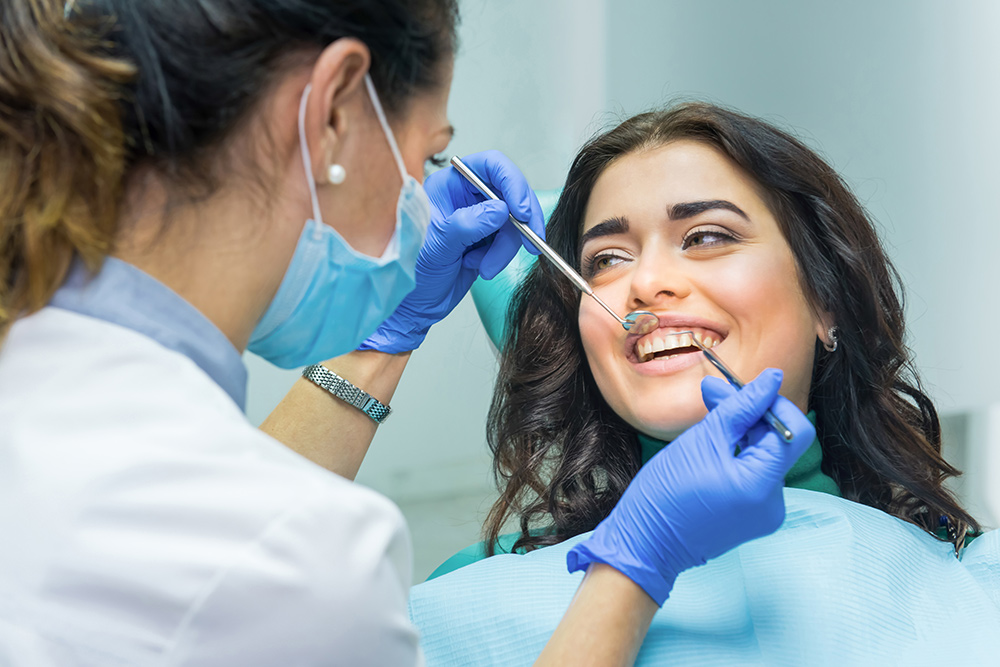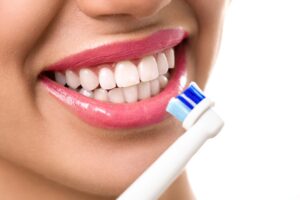
Your fears of having bad breath can often prevent you from socializing with those around you. This is especially true during important events such as job interviews or first dates where a pleasant breath is crucial in making a good impression. While it’s common to associate bad breath with eating foods such as onions and garlic, the root cause is not always that simple. In fact, some foods can help to temporarily mask bad breath and boost your confidence.
But now let’s take a look at what foods you should avoid consuming to not make your breath worse.
What foods make bad breath worse?
If everything is on point with your oral hygiene, but you are still troubled by unpleasant smells, then your diet may be the problem.
Onions and garlic
When it comes to the question of what foods can contribute to bad breath, garlic and onion often come to mind. These flavorful ingredients can enhance the taste of meals and offer numerous health benefits, but they also rank at the top as a cause of halitosis. It’s best to avoid consuming them before important events to ensure that you feel confident and comfortable.
Dairy
Dairy products are rich in amino acids. These acids provide a bountiful feast for the bacteria in your mouth. Unfortunately, consuming too much dairy products can lead to an overgrowth of bacteria that contribute to bad breath.
Fish
Fish is a valuable source of vitamins and minerals, but can also lead to less-than-fresh breath. Canned fish, in particular, can be a culprit of bad breath as the process of canning causes oxidation, leading to the release of pungent substances.
Drinks containing caffeine
For many people, coffee and tea are a daily staple, but they can also have an impact on your oral health. Caffeine-containing drinks can dehydrate your mouth, leading to an imbalance in pH levels, which creates an ideal environment for bacteria to flourish. This, in turn, can lead to bad breath.
How can I make my breath smell better naturally?
There are several remedies that might help you avoid having bad breath. Of course, dental checkup is the first and foremost step to do, but it’s also important to follow some of the advice listed below.
Take care of your oral hygiene
Maintaining good oral hygiene is key to keeping your breath smelling fresh and avoiding bad breath. Moreover, after every meal, it’s important to practice regular brushing and flossing, as well as using antibacterial toothpastes and mouthwashes. Gently brushing your tongue can help remove any buildup and keep your breath smelling clean.
Drink water
Dry mouth can be one of your enemies in the journey of getting a fresher breath. Not having a moist mouth can be caused by tobacco, caffeinated drinks and medical intakes.
Pay attention to your diet
Eating lots of sugary food, onions and garlic can’t be left without results.
What food neutralizes bad breath?
Vegetables, fruits and greens
Apart from having many health benefits, fruits, vegetables and greens like apples, carrots, parsley, and basil can be miraculous in helping you get rid of reduced saliva and odor-producing bacteria in your mouth.
Sugar-free gum
Chewing gum helps to get rid of particles of food in the mouth, thus acting like a toothbrush.
Melons and Citruses
The reason why melons and citruses are a good fighter in your journey of halitosis is that they are rich in vitamin C. They not only help with halitosis, but also other dental issues.
Ginger
Ginger contains compounds that help to break down sulfur-producing bacteria, which is the main cause of bad breath.
What drink kills bad breath?
Water
As simple as that, water doesn’t let your mouth stay dehydrated and can wash away bacteria if you just rinse out your mouth after eating.
Green tea
Green tea contains a strong antioxidant, which can mask the unpleasant breath like nothing else.
Bad breath can be a real struggle for anyone. It can harm not only your personal but also professional life, but following the advice mentioned above, you may prevent it. Also, do not forget to visit your dentist often to ensure your oral health is in good shape.
- Restoring lost bone structure caused by tooth extraction, gum disease, or facial trauma.
- Providing a solid foundation for dental implants, enhancing long-term implant success.
- Improving oral function and aesthetics by enhancing chewing ability and facial symmetry.
If you have been recommended bone grafting by your dentist, it is important to have an open and honest discussion about the procedure. They can explain the specifics of your case, address any concerns you may have, and provide personalized guidance throughout the treatment process.
In conclusion, bone grafting is generally considered a minor surgical procedure in the field of dentistry. While any surgical procedure can evoke concerns, understanding the details, risks, and benefits of bone grafting can help alleviate fears. Trust in the expertise of your dental professional and communicate openly with them to ensure a positive treatment experience.
- Clear or White – a popular choice for people who want a more discreet look.
- Silver – a classic color that complements any skin tone.
- Blue – a cool and calming color that symbolizes trust and loyalty.
- Green – a fresh and natural color that symbolizes growth and balance.
- Pink – a feminine and fun color that symbolizes love and compassion.
- Purple – a royal and regal color that symbolizes creativity and luxury
Colors that make teeth look whiter
One color that is particularly effective at making teeth look whiter is silver. Silver braces are a popular choice because they blend in with the natural color of your teeth, making them appear brighter. Silver is a versatile color that complements any skin tone, so it’s a great option for most people.
Another color that can help to make teeth look whiter is clear or white. Clear or white ceramic braces are a great alternative to traditional metal braces because they are less noticeable. The brackets are made of clear or tooth-colored material, which makes them blend in with the natural color of your teeth. These braces are particularly popular among adults who want a more discreet option.
Some people may also choose to go for darker colors, such as black, blue, or green, but it’s important to note that these colors can have the opposite effect and make teeth look more yellow or dull. This is because darker colors create a contrast with the natural color of your teeth, making them appear less bright.
Taking Care of Your Teeth
In addition to choosing the right color of braces, there are other things you can do to enhance the appearance of your teeth while wearing braces. For example, make sure to brush and floss your teeth regularly to keep them clean and healthy. This will help to prevent staining and discoloration, which can make your teeth look less bright.
You can also try using a whitening toothpaste or whitening strips to help brighten your teeth. However, it’s important to talk to your orthodontist before using any whitening products while wearing braces. Some products can damage the brackets or wires, so it’s important to choose a product that is safe to use with braces.
Ultimately, the color of your braces is a personal choice. It’s important to choose a color that you feel comfortable with and that reflects your personal style. If you’re not sure which color to choose, talk to your orthodontist. They can provide you with a color chart and help you choose a color that complements your skin tone and makes your teeth look their best. With the right color of braces and proper dental care, you can have a beautiful, healthy smile that you’re proud to show off.




